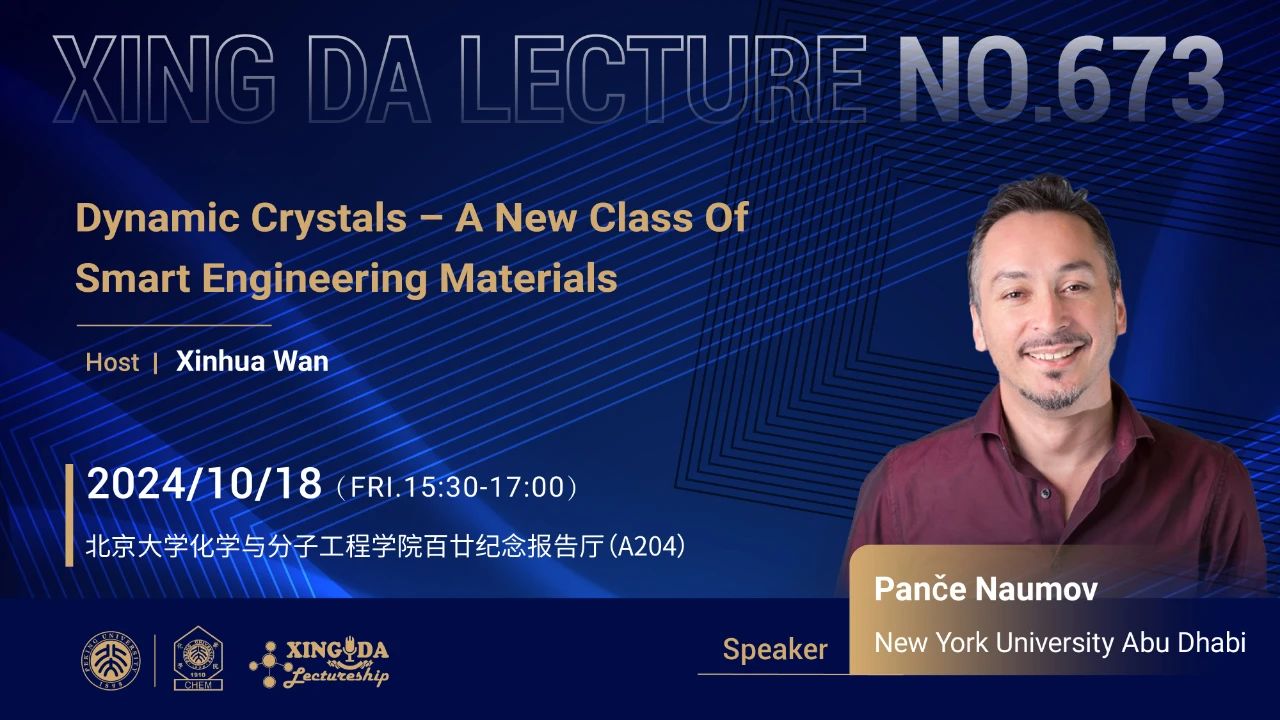
报告摘要
The anticipated shift in focal point of interest of solid- state chemists, crystal engineers and crystallographers from structure to properties to function of organic solids parallels the need to apply our accumulated understanding of the intricacies of crystal structure to explaining the related properties, with the ultimate goal of harnessing that knowledge in applications that require soft, light-weight, and/or biocompatible organic solids. In these developments, the adaptive molecular single crystals warrant a particular attention as a new class of materials for light, flexible, and environmentally benign devices, primarily memories, capacitors, sensors, and actuators. Some of the outstanding requirements for application of these dynamic materials as high-efficiency energy storage devices are strongly induced polarization, high switching field, and narrow hysteresis in reversible dynamic processes. However, having been studied almost exclusively by crystallographers, molecular crystals still lack the appropriate investigations that reliably evaluate their reproducibility, scalability, and actuating performance, and some important drawbacks have diverted the interest of engineers from these materials. United under the umbrella term crystal adaptronics, the recent research efforts aim to realistically assess the appositeness of dynamic crystals for applications that require fast, reversible and continuous operation over prolonged periods of time [1-13]. With the aim to highlight the most recent developments in the research of adaptive molecular crystals, this lecture discusses their assets and pitfalls. Using machine learning for the first time, we identify inherent features and structure-function relationships that fundamentally impact the mechanical response of dynamic molecular crystals. Our approach factors in different crystal properties in tandem and deciphers their intersectional and combined effects on the dynamic performance. It also provides some hints on the likely future developments that capitalize on the untapped, sequestered potential for applications of this distinct materials class.
[1] Mahmoud Halabi, J., Al-Handawi, M. B., Ceballos, R., Naumov, P. (2023) J. Am. Chem. Soc. 145, 12173.
[2] Awad, W. M., Davies, D. W., Kitagawa, D., Mahmoud Halabi, J., Al-Handawi, M. B., Tahir, I., Tong, F., Campillo-Alvarado, G., Shtukenberg, A. G., Alkhidir, T., Hagiwara, Y., Almehairbi, M., Lan, L., Hasebe, S., Prasad Karothu, D., Mohamed, S., Koshima, H., Kobatake, S., Diao, Y., Chandrasekar, R., Zhang, H., Sun, C. C., Bardeen, C., Al-Kaysi, R. O., Kahr, B., Naumov, P. (2023) Chem. Soc. Rev. 52, 3098.
[3] Karothu, D. P., Mahmoud Halabi, J., Ahmed, E., Ferreira, R., Spackman, P. R., Spackman, M. A., Naumov, P. (2022) Angew. Chem. Int. Ed. 61, e202113988.
[4] Spackman, P. R., Grosjean, A., Thomas, S. P., Karothu, D. P., Naumov, P., Spackman, M. A. (2022) Angew. Chem. Int. Ed. 134, e202110716.
[5] Mahmoud Halabi, J., Ahmed, E., Sofela, S., Naumov, P. (2021) Proc. Nat. Acad. Sci. USA 118, e2020604118.
[6] Naumov, P., Karothu, D. P., Ahmed, E., Catalano, L., Commins, P., Mahmoud Halabi, J., Al-Handawi, M. B., Li, L. (2020) J. Am. Chem. Soc. 142, 13256.
[7] Commins, P., Al-Handawi, M. B., Karothu, D. P., Raj, G., Naumov, P. (2020) Chem. Sci. 11, 2606.
[8] Karothu, D. P., Mahmoud Halabi, J., Li, L., Colin-Molina, A., Rodríguez-Molina, B., Naumov, P. (2020) Adv. Mater. 32, 1906216.
[9] Ahmed, E., Karothu, D. P., Warren, M., Naumov, P. (2019) Nat. Commun. 10, 3723.
[10] Li, L., Commins, P., Al-Handawi, M. B., Karothu, D. P., Mahmoud Halabi, J., Schramm, S., Weston, J., Rezgui, R., Naumov, P. (2019) Chem. Sci. 10, 7327.
[11] Ahmed, E., Karothu, D. P., Naumov, P. (2018) Angew. Chem. Int. Ed. 57, 8837.
[12] Commins, P., Tilahun D. I., Karothu, D. P., Panda, M. K., Naumov, P. (2016) Chem. Commun. 52, 13941.
[13] Naumov, P., Chizhik, S., Panda, M. K., Nath, N. K., Boldyreva, E. (2015) Chem. Rev. 115, 12440.
报告人简介
Panče Naumov(庞澈·瑙莫夫),纽约大学终身教授,马其顿人,2004 年获得东京工业大学化学和材料科学博士学位,随后在日本国立材料科学研究所、大阪大学和京都大学从事研究工作,2012年加入纽约大学,并成为纽约大学本校区及阿布扎比分校区终身教授。Naumov 教授目前是纽约大学阿布扎比分校先进材料中心主任,他创立了阿联酋化学学会及晶体学会,并担任学会主席。Naumov教授是美国化学学会、英国皇家化学学会会士,哈佛大学 Radcliffe 学者,德国洪堡学者,担任 JACS、Angew等期刊编委,同时担任 National Science Foundation (NSF)、 European Research Council (ERC)等基金评审委员会委员。Naumov 教授专注于智能材料、晶体学、生物发光和石油组学的研究,在 Nat. Chem.、PNAS、Nat. Commun.、JACS、Angew. Chem. In. Ed. 等期刊发表超过270篇SCI论文,他引次数1万余次。五年来Naumov 科研团队申请获批超过 1500万美元的科研基金,研究项目主要来自于阿布扎比国家石油公司 (ADNOC)、阿布扎比教育委员会(ADEC)、人类科学前沿计划组织 (HFSPO) 和阿联酋国家研究基金会(NRF)。